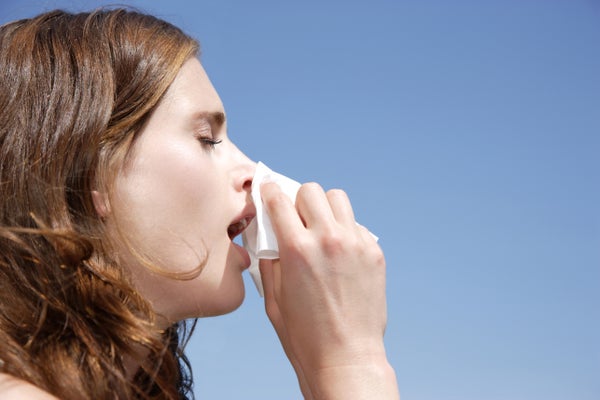On supporting science journalism
If you're enjoying this article, consider supporting our award-winning journalism by subscribing. By purchasing a subscription you are helping to ensure the future of impactful stories about the discoveries and ideas shaping our world today.
Roberta A. Pagon, a professor of pediatrics at the University of Washington, explains.
Reflexive sneezing induced by light, and sunlight in particular, is estimated to occur in 18 to 35 percent of the population and is known as the photic sneeze reflex (PSR) or the ACHOO (autosomal dominant compulsive helio-ophthalmic outbursts of sneezing) syndrome. Its genetic nature has been known for at least the last 25 years; it is periodically discussed in the medical literature and lay press. Observations that emerging from dim light into sunlight or turning to face directly into the sun commonly triggers the reflex prompted early inquiries into the trait. The number of induced sneezes--which seems to be genetically mediated and can be predicted within a family--is constant from episode to episode and typically numbers two or three.
Some consequences of the PSR include danger to automobile drivers when emerging from dim light, such as a tunnel, into full sunlight, and disruption of outdoor group photos. More recently, reports in publications oriented to military medicine have noted the potential danger to pilots experiencing the PSR. In fact, studies conducted by the military revealed that the PSR is not mediated by specific wavelengths of light and thus cannot be mitigated by the use of filtering lenses; rather the investigators concluded that the PSR is induced by changes in light intensity. Others have not found flickering light to precipitate the PSR. Exactly how sunlight causes some people to sneeze remains unknown.
